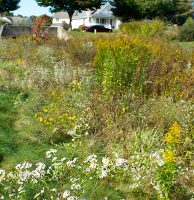
Pollution Diet for the Chesapeake Bay is a Good Thing
TMDL is sometimes referred to as a pollution diet to help clean up a polluted waterbody. TMDL stands for Total Maximum Daily Load. It is the maximum amount of pollution a waterbody can receive and meet water quality standards. Unfortunately, the Chesapeake Bay is such a waterbody. It is polluted with sediment and nutrients like nitrogen and phosphorus (from fertilizers, animal waste, etc.). These pollutants cause algal blooms that kill aquatic life, smother fish eggs on the bottom of the Bay, and make some areas unsafe for recreation.
The Chesapeake Bay TMDL was established in 2010 by the U.S. Environmental Protection Agency (EPA) to restore clean water in the Bay and the streams, creeks, and rivers that flow into it. It is the largest TMDL ever established by the EPA, covering 64,000 square-miles of the watershed. It includes Delaware, Maryland, New York, Pennsylvania, Virginia, West Virginia, and the District of Columbia. The Bay TMDL is actually a combination of 92 smaller TMDLs located across the watershed. Many communities in Pennsylvania are subject to those individual TMDLs with their own set of pollution reduction requirements.
What does a TMDL Do?
The Chesapeake Bay TMDL sets limits on the amount of sediment, nitrogen, and phosphorus that can be found in the Bay each year. That ends up being a 25 percent reduction in nitrogen, 24 percent reduction in phosphorus, and 20 percent reduction in sediment for the Bay as a whole. Control measures will help us meet those reductions, which must be in place fully by 2025 (although 60 percent of necessary reductions should be in place by 2017).
There are several features of the TMDL in place to restore the Bay and its tributaries. These include Watershed Implementation Plans (WIPs), nutrient credit trading and offsets, and implementation of best management practices (BMPs) to reduce pollution ending up in the Bay.
A WIP is like a roadmap to clean water. It is a written plan that describes the control measures to be put in place by 2017 and 2025 to make sure water quality in the Bay has met its pollution reduction targets. Nutrient credit trading allows one pollution source to meet the regulations by “trading” their excess pollution with another source that is below the pollution threshold while still reducing the amount of pollution overall. BMPs include the installation of rain gardens, vegetated swales, detention ponds, and other “green infrastructure” that will filter pollution out of stormwater before it gets into streams and rivers that lead to the Bay.
Where Do We Go From Here?
The next Bay TMDL milestone is this year, 2017. Will we meet the 60 percent reductions required by the TMDL? Some of the states within the Chesapeake Bay watershed are much closer to meeting their pollution reduction goals than others. Unfortunately, Pennsylvania has lagged behind states like Virginia and Maryland. One reason for this is simply how much of the watershed in located within our state: 40 percent. The Susquehanna River is the largest tributary of the Bay.
In subsequent posts we will discuss some steps that Pennsylvanians can take to help improve the commonwealth’s role in reducing pollution to the Bay. LandStudies is doing its part by helping communities subject to their own TDMLs deal with their stormwater pollution issues.
To learn more about these projects, go to https://landstudies.com/portfolio-2/stormwater-management-bmps. For more information on the Chesapeake Bay TMDL, visit https://www.epa.gov/chesapeake-bay-tmdl.


